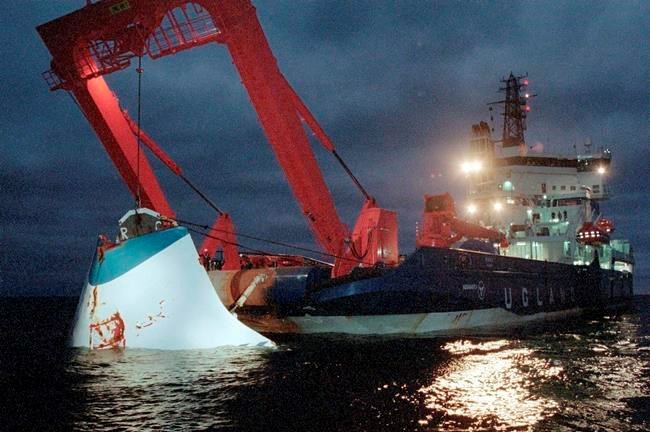COPENHAGEN — Sweden said Friday it wants divers to inspect the wreck of one of Europe’s deadliest peacetime maritime disasters, the sinking of a ferry in the Baltic Sea in 1994 that killed 852 people, in order to probe claims of a large hole in the hull.
A 1997 report had concluded that the M/S Estonia — that was sailing from Tallinn to Stockholm — sank after the bow door locks failed in a storm, and flatly rejected the theory of a hole, which has long been the focus of speculate on about a possible explosion on board.
Home Affairs Minister Mikael Damberg said Sweden's Accident Investigation Authority along with its counterparts in Finland and Estonia wanted to to send divers down to the wreck that lies on the Baltic seabed off Finland's southwest to investigate the damaged hull claims.
No timeline for an official dive was announced.
A video of the wreck site showed a hole in the ferry's hull measuring 4
“The purpose is to find out what the hole is,” said John Ahlberk, head of the Swedish Accident Investigation Authority.
Following the documentary's airing , Sweden, Finland and Estonia said they will jointly assess what that they described “new significant information” about the disaster, although they're relying on the conclusions of the 1997 report.
In 1996, work began to entomb the wreck with textile, sand and cement to ward off graveyard robbers and plundering. The wreck is considered a graveyard, which gives the site legal protection by criminalizing attempts to disturb it. Most countries bordering the Baltic Sea prohibit trespassing on the site.
Despite this, regional coast guards cannot stop any diving attempts because the wreck lies in international waters. There have been several instances of private dives, usually paid for by victims' families or salvage companies. Since the sinking, many private dives have taken place, including those that were part of the documentary.
Damberg said Swedish lawmakers would reject any attempt to repeal a law that supports Estonia's designation of the wreck site as a graveyard.
The Associated Press



